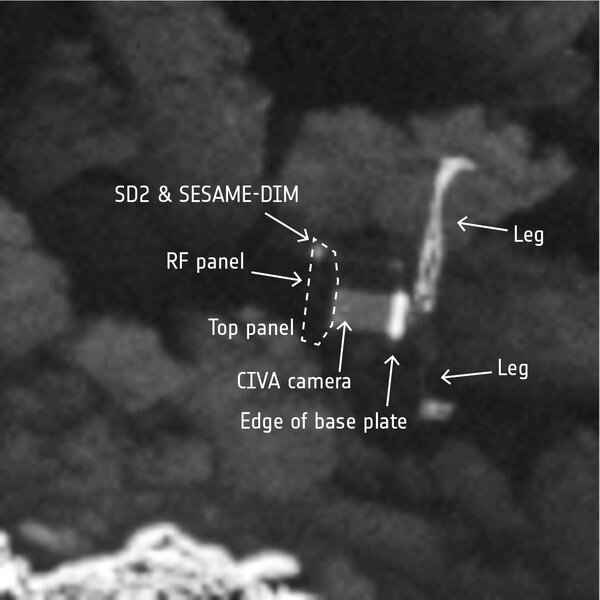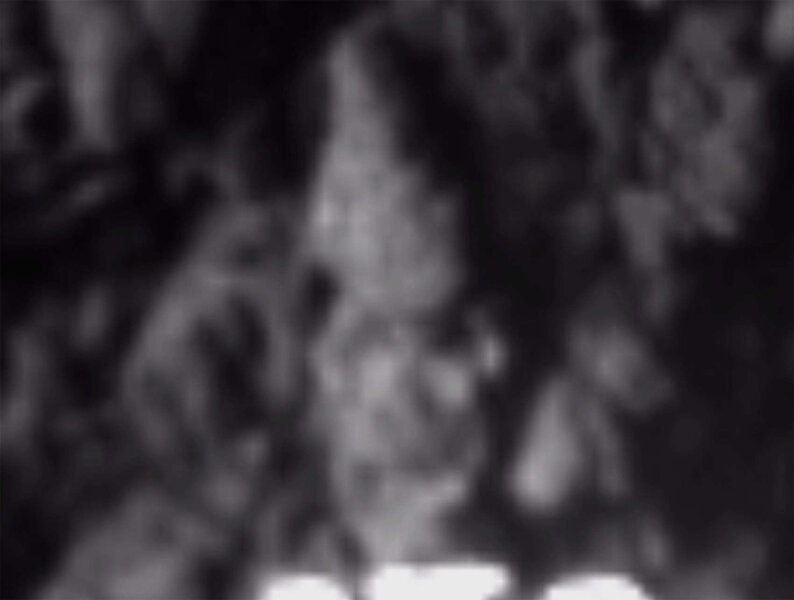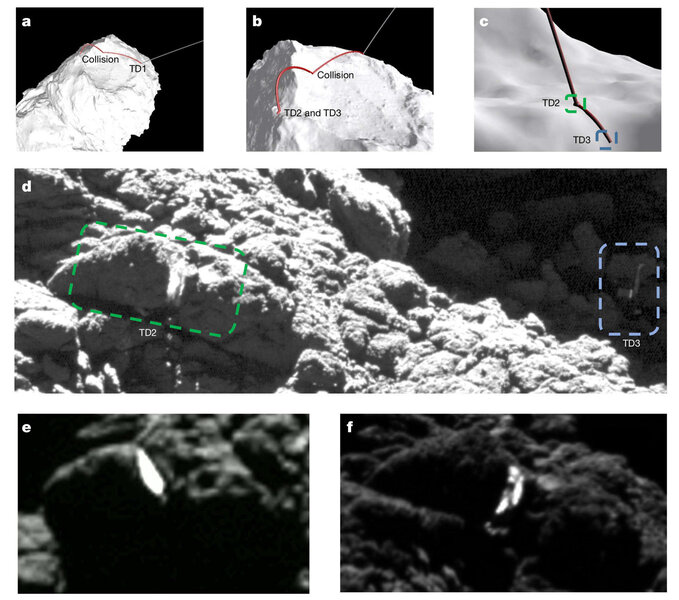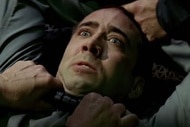Create a free profile to get unlimited access to exclusive videos, sweepstakes, and more!
A doomed lander reveals one last secret: Comets are fluffy like cappuccino foam
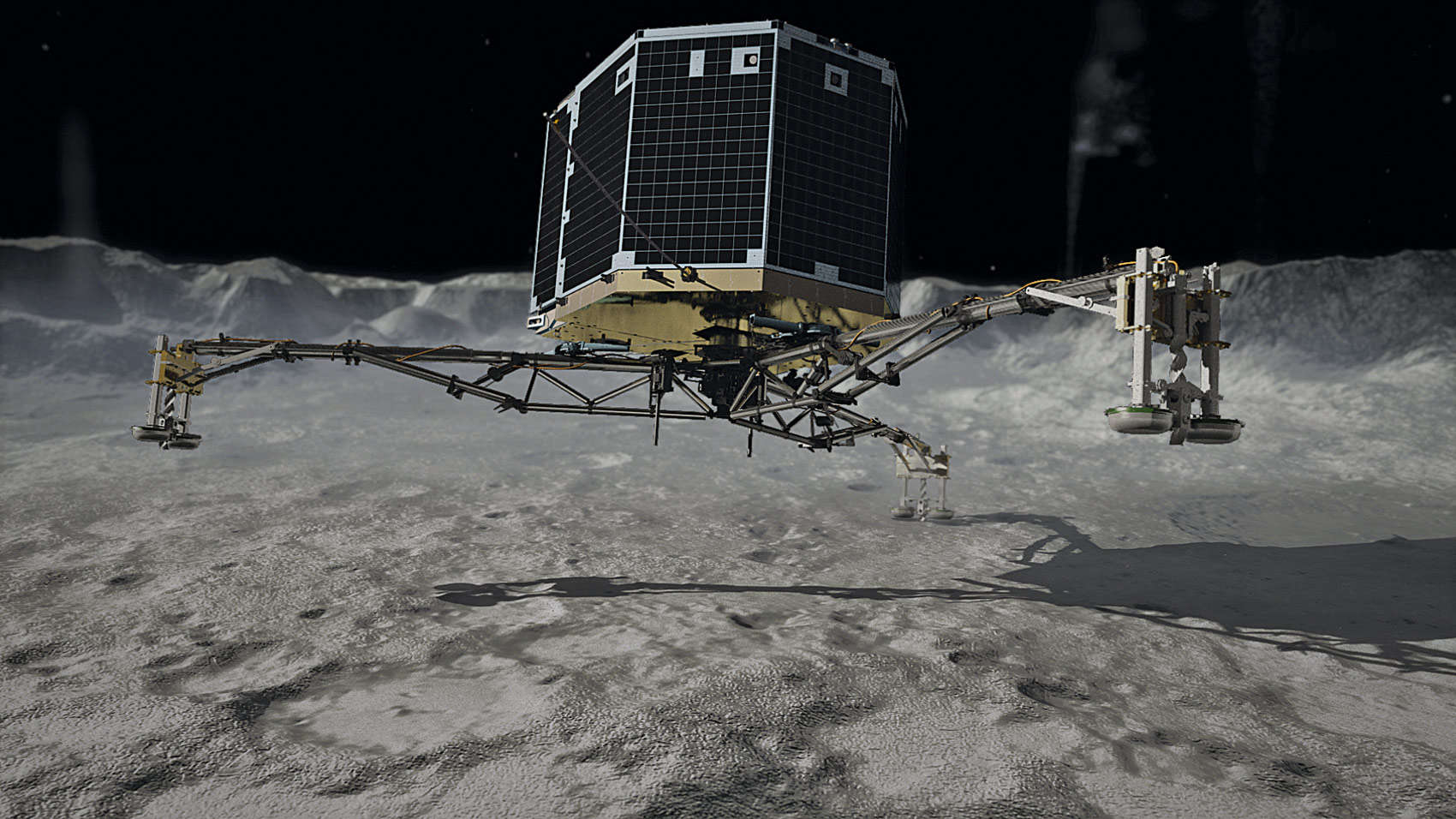
In 2014, a dramatic but doomed journey played out in space over 500 million kilometers from Earth.
The Rosetta spacecraft had taken over a decade to reach the comet 67P/Churyumov-Gerasimenko (usually just called 67P), and three months after it arrived — after mapping the surface extensively — it deployed the tiny lander called Philae.
Philae was to land on the comet's surface and examine its surroundings, sending the data back to Rosetta and from there to Earth. But something went wrong. The harpoons meant to secure it to the surface in the nearly non-existent gravity failed to fire, and instead of attaching to the comet, Philae instead smacked into it and rebounded.
Despite the low speed of the impact (less than 40 cm/sec) at this first touchdown site, it bounced high, going up a kilometer from the surface (and hitting a glancing blow against the edge of a ridge) before falling back down. It then impacted a second time, much more slowly, this time taking two minutes to bounce around a bit, then finally making it's third and final touchdown about 30 meters away.
The first touchdown site was known relatively well, and its final resting place was found after nearly two years of searching.
But where was that second touchdown site?
After years of searching, scientists have finally found it, and it's very cool they did: It reveals that during the second impact Philae scoured off some of the surface material of the comet to reveal shiny — and extremely fluffy — ice underneath.
The first piece of the puzzle put in place was creating a trajectory for Philae after it first impacted the comet in a region called Agilkia, helped by knowing the final spot in a different region called Abydos*.
Along that trajectory, just meters from where Philae lay, are two patches of highly reflective ice that weren't there before the landing, implying that the lander itself was involved with exposing them.
Assuming it did, and given the timing of when the lander would've hit that spot, scientists turned to an unlikely source of info: the lander's magnetometer, called ROMAP.
This is a device that measures the magnetic field around the comet, used to understand the environment and the comet's interaction with the solar wind. It sticks out from the lander at the end of a half-meter long boom. But it wasn't so much the comet's magnetism that helped find the lander: It was the magnetometer itself whacking into the surface that did the trick.
When the magnetometer physically impacted the comet surface, the data it recorded showed the lander's acceleration (its change in velocity as it hit) and its attitude (the orientation of the spacecraft). Once that was all in hand, the scientists could finally get the story of what happened to poor Philae at this second impact site.
When it came down a second time, it actually made four separate contacts with the surface. It hit and slid down the side of a boulder first, spinning like a windmill, and with its landing feet disturbing dust that had piled up. It passed through a 2.5-meter long crevice in the boulder, hitting the crevice wall and compressing the ice there. It bounced up, hit an overhang, then hit the surface again before bouncing away to the third (and final) touchdown site 30 meters away. The whole process took about two minutes.
What's funny is that, when seen at the right orientation, the second touchdown looks like a skull's face!
The right eye of the skull (we see it on the left) is actually that last impact from Philae before bouncing to its final stop (the other features were there already).
That right eye is where Philae compressed the surface, breaking through a wall of dust, taking three seconds to compress it by about 25 centimeters, then bounced off, leaving behind the bright ice.
That's cool, but there's science there too! Given the mass and speed of the lander, the fact that it compressed the ice that much means the ice is extremely fragile, basically the strength of frothed milk in a cappuccino, or foam on a seawave.
That's astonishing. We've known for a long time that the material composition of a comet's surface is fragile, and the structure underneath the surface likely to have lots of voids (like the empty space between oranges in a crate), lowering the overall density. But this is pretty good proof that comets are in fact incredibly fluffy. It would actually be hard to hold a chunk of it in your hand without crushing it. The porosity of the icy boulders is around 75%, meaning they're mostly holes.
The only reason it can be like this is that the comet's gravity is so weak. It's only a few kilometers across, and the mass low. In Earth's gravity it would likely collapse.
This explains the timing, too. When Philae approached the second site, it was moving about 20 cm/sec downwards toward the surface and 10 cm/sec along the surface. The impacts slowed it, including when it compressed the dusty ice, so that when it finally left the second site it was moving only 1 cm/sec upward and 9 cm/sec along the surface. If the surface were more rigid the lander wouldn't have slowed so much, but the energy of its motion was leeched away by compressing the fragile surface.
Mind you, the escape velocity at that spot on the comet is only a bit more than 40 centimeters per second! If you tried to walk along the surface you'd fly off. In other words, if Philae had been moving much faster when it bounced the first time it wouldn't have come back down. If the surface hadn't been as compressible it might have bounced many more times before stopping.
It's fair to say the lander mission didn't go quite as planned. And yet, even then, some great science about the structure of the comet was still obtained, information that might not have been known had the landing gone as it was supposed to! Science is funny that way sometimes.
So there Philae sits. Around the comet's horizon, the Rosetta mothership came to rest as well, dropping to a touchdown on 30 September 2014, not long after Philae was first found. It's fitting, I think, for the spacecraft to stay with the target they pursued for so long. They had quite a ride, and I'm glad we now know just what an adventure it was.
*I know, Stargate fans. I thought it was cool, too.
